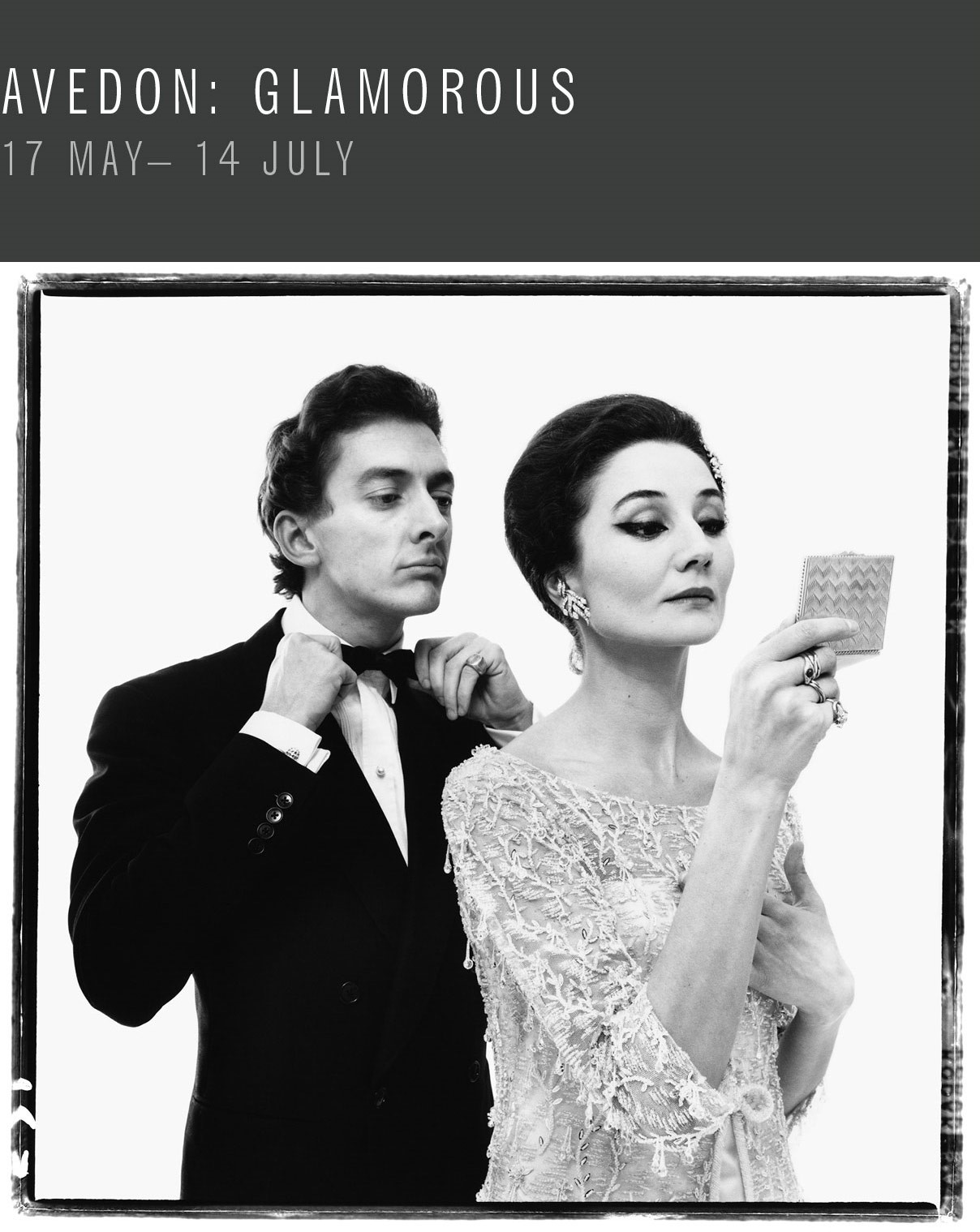Hamiltons is excited to announce our forthcoming exhibition AVEDON: GLAMOROUS, to commemorate the centenary of Richard Avedon’s birth.
To mark this momentous occasion, Hamiltons with the support of The Richard Avedon Foundation will present some of Avedon’s most iconic and rare images that centre around the theme of glamour.
Through his unique ability to invoke an exciting quality within his subjects Avedon could make even the most mundane appealing, bringing a sophisticated glamour to both some of the 20th century’s most notable figures and luminaries such as Ingrid Boulting, Tina Turner, Coco Chanel and Adam Clayton Powell.

Hamiltons is pleased to present Avedon: Glamorous, in celebration of the centenary of Richard Avedon’s birth. In recognition of the gallery’s long-standing association with the artist and to mark this momentous occasion, the exhibition will present iconic and rarely seen photographs that focus on glamour – a central pillar to his oeuvre. Through his unique ability to invoke an exciting quality within his subjects, Avedon could make even the most mundane appealing, bringing a sophisticated glamour to both some of the 20th century’s most notable figures and luminaries.
Richard Avedon, widely acknowledged as one of the pioneers of modern photography but also one of its most influential proponents, was born in New York City in 1923. His first foray into the world of professional photography came about in 1945, under the tutelage of Alexey Brodovitch, then at Harper’s Bazaar. Harper’s Bazaar, alongside Vogue during the middle of the twentieth century, operated as testing grounds for more conscious and imaginative styles of photography. It is these creative milieus that allowed Avedon to explore and develop his own practice as a fine art photographer. This focus of his was recognized with early solo shows at The Smithsonian (1962) and the Minneapolis Institute of Fine Art (1970). He would become the first living photographer to be honored with a solo exhibition at the Metropolitan Museum of Art in 1978, followed by a retrospective in 2002. Upon the occasion of that retrospective, Philippe de Montebello, Director of the Metropolitan Museum of Art from 1977-2008, remarked that Avedon “has distinguished himself as an artist of immense energy and originality and created many of the iconic images of our time.”
Avedon’s imagery, renowned for its transformative and distinctive visual language, often challenged and questioned the boundaries of conventional beauty. Throughout his life, Avedon, in his portraiture, maintained a unique style that combined the rigor of the studio with the spontaneity of projects on location. He captured with wit and inventiveness the likeness of sitters, both well-known and anonymous, from celebrities and models to his friends and family. He used his distinctive ability to understand human psychology to frame the charisma of his subject.
Andy Warhol and members of the Factory, New York City, October © Richard Avedon Foundation Limited edition print made at the time of Richard Avedon Retrospective 1944-1994 at the Whitney Museum of American Art.

Hamiltons has worked closely with The Avedon Foundation to curate this exhibition to emphasize and convey the length and breadth of Avedon’s understanding of how a well-aimed lens has the power to capture a photograph that can distil and reveal how sheer human emotion manifested through individual mannerisms has the ability to convey an ethereal, transcendent glamour. Alongside his fashion photography, Avedon became renowned for his portraits that encompassed all walks of life. His subjects ranged from social activists to figures from high society, from Coco Chanel, Tina Turner, Andy Warhol, and the members of his factory, to Adam Clayton Powell, all unified by their ability to excite the artist’s compassion. His portraits reveal the essential character of his sitters, humanizing them, and thus allowing the viewer to interact with the individual, their public persona cast aside.
Avedon throughout his career nurtured relationships with some of the most sought-after models of his time, such as Twiggy, Ingrid Boulting, Dovima, Jean Shrimpton, and Suzy Parker. This familiarity allowed for a comprehension of their quirks and mannerisms, allowing him to explore the possibilities of femininity within fashion photography. Ever inspired by the stage, physical beauty was of little importance to Avedon. Rather, he sought out individuals who could produce the dramatic qualities that complemented his theatrical vision to capture their most striking characteristics. As Suzy Parker once said, “he’s the most wonderful man in the business because he realizes that models are not just coat hangers.”
Transgressing traditional portraiture, capturing his subject’s pathos in a way only photography can, Avedon’s pioneering use of light, coupled with his cinematic eye for staging, offered strikingly austere insights into the figures that shaped American society. He was and still remains the photographer that redefined fashion, perceptions of glamour and femininity, conveying a wondrous sense of creativity that no other has yet to match.
Richard Avedon (1923–2004) Avedon’s first museum retrospective was held at the Smithsonian Institution in 1962. Many major museum shows followed, including two at the Metropolitan Museum of Art (1978 and 2002), the Minneapolis Institute of Arts (1970), the Amon Carter Museum of American Art (1985), the Whitney Museum of American Art (1994), and the Metropolitan Museum of Art (2002). His first book, Observations, with an essay by Truman Capote, was published in 1959. He continued to publish books of his works throughout his life, including Nothing Personal in 1964 (with an essay by James Baldwin), Portraits 1947–1977 (1978, with an essay by Harold Rosenberg), An Autobiography (1993), Evidence 1944–1994 (1994, with essays by Jane Livingston and Adam Gopnik), and The Sixties (1999, with interviews by Doon Arbus). Collections include the Smithsonian Institution, Washington, DC; Metropolitan Museum of Art, New York; Museum of Modern Art, New York; Centre Pompidou, Paris; and numerous others worldwide. The Richard Avedon Foundation established during his lifetime is based in New York and houses his archive.
13 Carlos Place
London, W1K 2EU
Tel. +44 (0) 207 499 9493
General Enquiries
art@hamiltonsgallery.com
